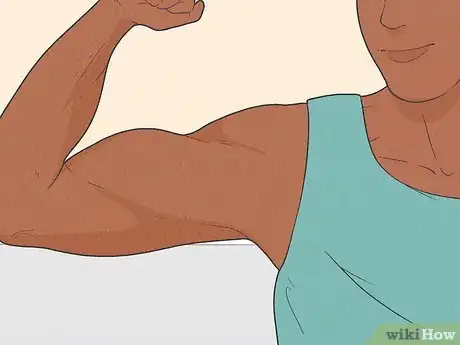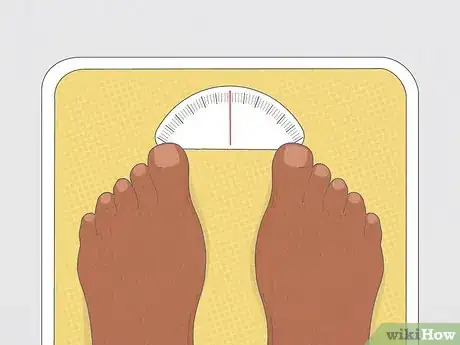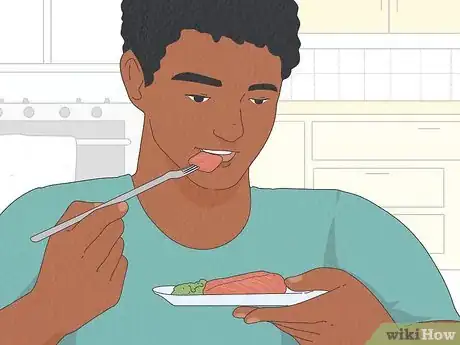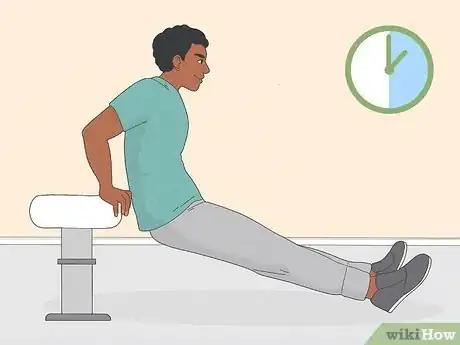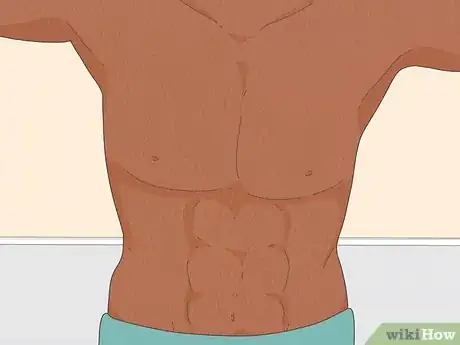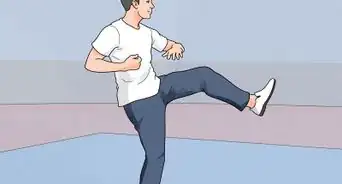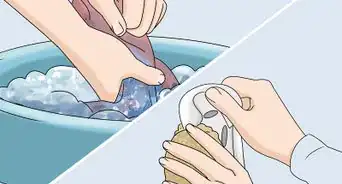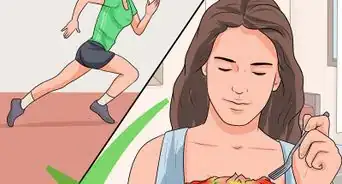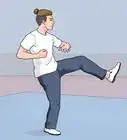This article was co-authored by Landis Owens and by wikiHow staff writer, Eric McClure. Landis Owens is a Personal Trainer and the Owner of Almighty Personal Training Studio in Tempe, Arizona. With over 15 years of experience in the health and fitness industry, Landis specializes in weight loss, nutrition, and core and strength training. Landis received a football scholarship to Mesa Community College where he studied Engineering and Sports and Exercise. He is an ISSA Certified Personal Trainer and also holds certifications in Nutrition, Youth Sports, Injury Stay Free, and CPR. Landis also competes in bodybuilding competitions.
There are 13 references cited in this article, which can be found at the bottom of the page.
This article has been viewed 37,452 times.
Calisthenics refer to any form of exercise where you rely solely on your own body weight as resistance.[1] There are tons of different calisthenic exercises, so you have a lot of freedom when it comes to crafting your workout routine and picking exercises that you enjoy. Since you don’t need any special equipment and you can do these exercises in the comfort of your own home, calisthenics are one of the best ways to start a regular exercise routine if you are working on getting back into shape or shedding a few pounds!
Steps
How do you train calisthenics at home?
-
1Choose a few calisthenic exercises to target every part of your body. You can do pushups, pullups, squats and lunges, crunches, jumping jacks, and more if you’re creating a training program. A calisthenic is any exercise where you lift your own body weight, so there are literally hundreds of options out there. Start by picking 5 exercises that seem fun to you for a basic routine, and cover all of your bases by including exercises that work your upper body, core, and lower body.[2]
- For your upper body, there’s no real substitute for pushups! Chin-ups and pullups are great if you want to focus on your shoulders, while dips are a great way to target your triceps.
- Crunches, sit-ups, Russian twists, and deadbugs are great for working your core. You can also use planks if you’re looking for something a little less intense.[3]
- To target the lower body, you could do squats, box jumps, or lunges.[4] Most calisthenic exercises that target your lower body will also strengthen your back and hips.
- Some calisthenic exercises are designed to target the whole body. The burpee is a great option for this, but burpees can be a little rough if you’re just starting out.
-
2Start with a low number of reps and work your way up over time. To start a calisthenic routine, the most popular strategy is to start with a set number of repetitions for each exercise (usually 5 or 10), and then increase the number of repetitions over time to improve your endurance. When you’re starting out, focus on your form and master that before you increase the number of reps.[5]
- If your goal is to build muscle, you can put a weighted vest on or use resistance bands to increase the amount of effort you need to put into each rep. This is a great way to make your calisthenic routine more interesting after you have the form down![6]
- There are high-intensity calisthenic routines out there that involve advanced exercises.[7] These are not ideal if you’re just starting out.
Can you build muscle with only calisthenics?
-
1Yes, calisthenics will help you develop your muscles. When you lift your body’s natural weight, it’s basically the same thing as lifting a free-weight. Any kind of weight-resistance exercise will help you build muscle, and calisthenics are no different.[8] However, since you can’t control the weight and calisthenics burn a lot of calories, calisthenics aren’t necessarily the fastest or most efficient way to bulk up. They will certainly make you stronger and help with muscle definition, though.[9]
- You are less likely to build muscle if you’re especially skinny or you have a low BMI. The reasoning here is that calisthenics rely on your body weight as the main form of resistance. If you don’t weigh a lot, you aren’t putting that much stress on your muscles. You’ll still build muscle, but you won’t see big gains right away.
-
2You can add a weighted vest or ankle weights to increase your muscle growth. If your main goal is to lose weight or improve your flexibility, don’t focus on adding weight. But if you are interested in bigger muscles, get a weighted vest or ankle weights and wear them while you do your exercises.[10]
- If you want that body builder look, lifting weights is really the best way to go. You can still do calisthenics, but incorporate at least 2-3 days of weight lifting into your weekly exercise schedule.
Do calisthenics burn fat?
-
1Calisthenics can definitely help you burn fat and lose weight. Since calisthenics increase your heart rate and get your body moving, they will help you lose weight. If weight loss is your main goal, be sure to incorporate squats and jumping jacks in your routine. These are two of the best exercises if you want to burn fat since they work your entire body and keep you sweating.[11]
-
2Your diet is the main consideration when it comes to long-term weight loss. Don’t assume that a few minutes of calisthenics every day is going to lead to any serious weight loss. Your diet and lifestyle are much more important when it comes to losing weight. Even when you start shedding pounds with a calisthenic program, you’re likely to put the weight back on if you aren’t eating a healthy diet.[12]
- A healthy diet will also make it easier to work out. If you’re eating a bunch of junk food or you’re eating a lot red meat, you may feel sluggish and put off your daily workout.
How often should I train calisthenics?
-
1Do calisthenics for 30 minutes a day if your goal is to lose weight. If you aren’t doing any weightlifting or high-intensity workouts and you want to lose weight, do calisthenics for at least 30 minutes every day. This is the best way to consistently burn through calories without putting a ton of stress on your body.[13]
- The great thing about calisthenics is that you don’t need any crazy equipment and you can do them basically anywhere in your home. One easy way to get your 30 minutes of exercise in is to throw on a TV show that lasts 30 minutes and just work out while you’re watching it.
-
2Do calisthenics on rest days if you do other forms of exercise. Calisthenics aren’t extremely hard on your body since you’re never lifting more than your body weight. If you are doing any weight lifting or high-intensity training, you need to take days off in between workouts. Do your calisthenics on your rest days to burn through some calories and tone your muscles without putting too much pressure on your body.
- If you’re doing some kind of high-intensity calisthenic training, treat the calisthenics like a form of weight lifting. Take at least one day off after each workout to give your muscles time to recover.
What should I eat while doing calisthenics?
-
1Eat a balanced, healthy diet the same way you normally would. You don’t need any kind of special diet for calisthenics. Just focus on eating a healthy diet that’s low in red meat, fat, and sugar. Try to consume a variety of fruits, vegetables, whole grains, and lean proteins. Cut out the junk food and avoid sugary drinks, since these are full of empty calories.[14]
- Don’t forget to drink plenty of water. Hydration is really important when it comes to any exercise routines. Drink 2–3 cups (470–710 mL) of water before and after you work out. Drink 1⁄2–1 cup (120–240 mL) every 15-20 minutes while you’re working up a sweat.[15]
- It’s generally better to eat 4-5 smaller meals every day than 2-3 bigger meals if you’re working out regularly.[16]
-
2Try to maintain a calorie deficit if your goal is to lose weight. You achieve a calorie deficit when your body burns more calories than you consume. If you’re trying to lose weight efficiently, cutting back on the calories is extremely important.[17] If you weigh 185 pounds (84 kg), 30 minutes of calisthenics will burn through roughly 200 calories.[18]
- For example, if you eat 1,200 calories a day and you burn roughly 400 calories by doing calisthenics, you only need to work through 801 calories to reach a deficit. Keep in mind, any physical activity burns calories. Walking, doing yoga, stretching, and cleaning up around your home will all burn calories.
- There are tons of apps out there that will help you track your calories.
How long does it take to see results from calisthenics?
-
1It really depends on how often and how hard you train. The amount of time it takes to see results depends on how often you do calisthenics and whether you’re doing any other forms of exercise or not. It also depends on how much weight you have to lose and whether or not you’re already in shape. Try not to get discouraged if you don’t see results right away.[19]
- If you’re overweight and you haven’t worked out in a while, it’s probably going to take a longer time to see serious results. Try not to get down about this; your body is going to thank you in the long run!
-
2Stick with the calisthenics and you’ll start seeing results in a few months. Even if you don’t get that perfect 6-pack, you’re going to start feeling better in a month or two. If you stick with a regular calisthenic schedule, you’ll notice you have more energy, better balance, and a sharper mind. Getting results with calisthenics is all about consistency, so don’t give up![20]
References
- ↑ https://www.hsph.harvard.edu/nutritionsource/2013/11/20/physical-activity-guidelines-how-much-exercise-do-you-need/
- ↑ https://www.ahealthiermichigan.org/2011/05/10/10-exercises-you-definitely-have-time-for/
- ↑ Landis Owens. Personal Trainer. Expert Interview. 8 June 2021.
- ↑ Landis Owens. Personal Trainer. Expert Interview. 8 June 2021.
- ↑ https://www.military.com/military-fitness/make-calisthenics-harder-slower-cadence-heavier-reps-and-more-reps
- ↑ https://www.military.com/military-fitness/make-calisthenics-harder-slower-cadence-heavier-reps-and-more-reps
- ↑ https://academic.oup.com/milmed/article/180/5/492/4161825
- ↑ https://www.britannica.com/sports/calisthenics
- ↑ https://www.academia.edu/8045833/Benefits_of_Calisthenic_Workout
- ↑ https://www.military.com/military-fitness/make-calisthenics-harder-slower-cadence-heavier-reps-and-more-reps
- ↑ https://www.academia.edu/8045833/Benefits_of_Calisthenic_Workout
- ↑ https://www.sciencedirect.com/science/article/abs/pii/S0005789485800022
- ↑ https://www.hsph.harvard.edu/nutritionsource/2013/11/20/physical-activity-guidelines-how-much-exercise-do-you-need/
- ↑ https://www.mayoclinic.org/healthy-lifestyle/nutrition-and-healthy-eating/basics/healthy-diets/hlv-20049477
- ↑ https://www.mayoclinic.org/healthy-lifestyle/fitness/in-depth/exercise/art-20045506
- ↑ https://health.clevelandclinic.org/how-small-frequent-meals-can-help-athletes-keep-energy-high/
- ↑ https://medium.com/@oldschool.calisthenic/how-much-time-is-required-to-have-results-with-calisthenics-17f48b766986
- ↑ https://www.health.harvard.edu/diet-and-weight-loss/calories-burned-in-30-minutes-of-leisure-and-routine-activities
- ↑ https://medium.com/@oldschool.calisthenic/how-much-time-is-required-to-have-results-with-calisthenics-17f48b766986
- ↑ https://medium.com/@oldschool.calisthenic/how-much-time-is-required-to-have-results-with-calisthenics-17f48b766986



